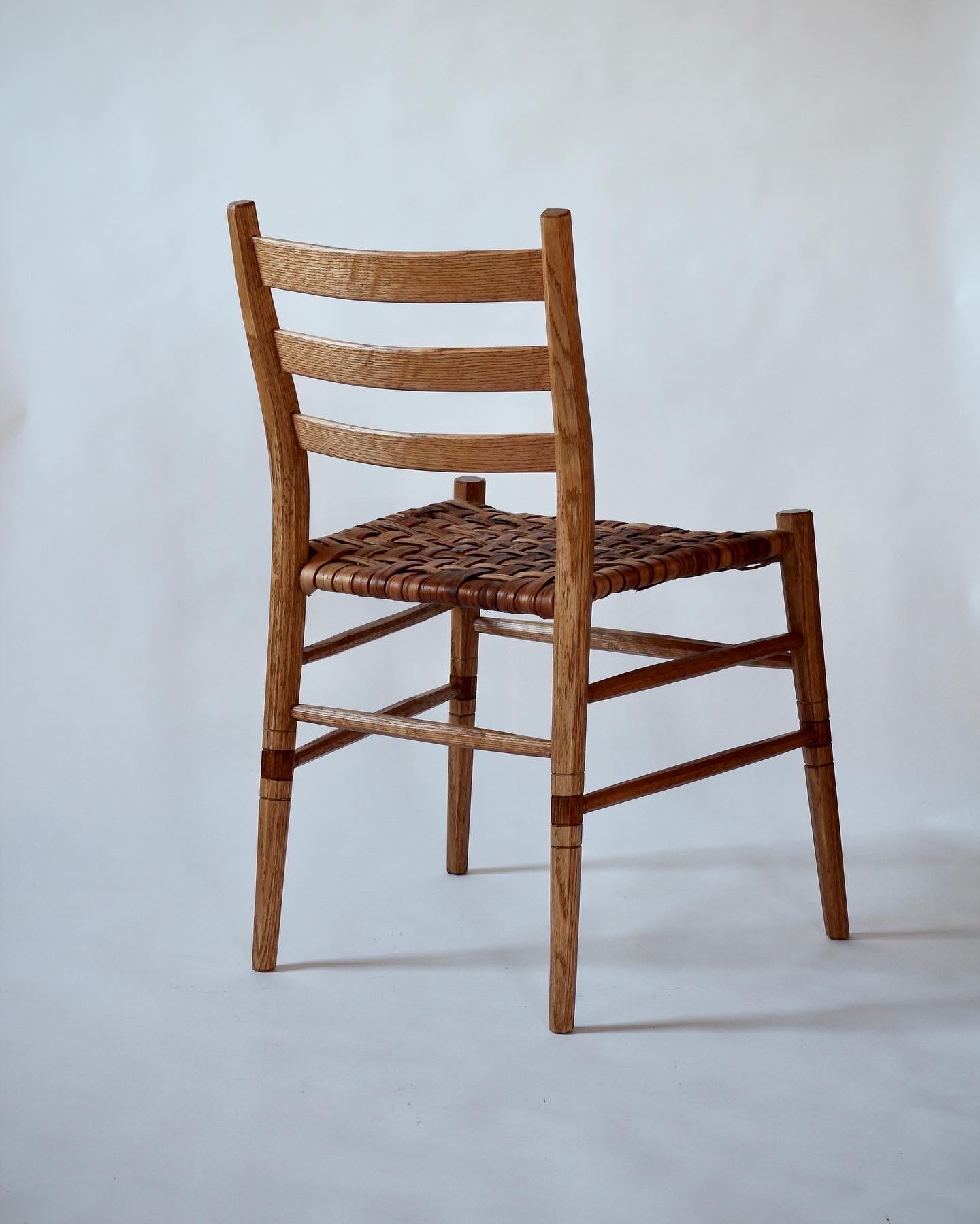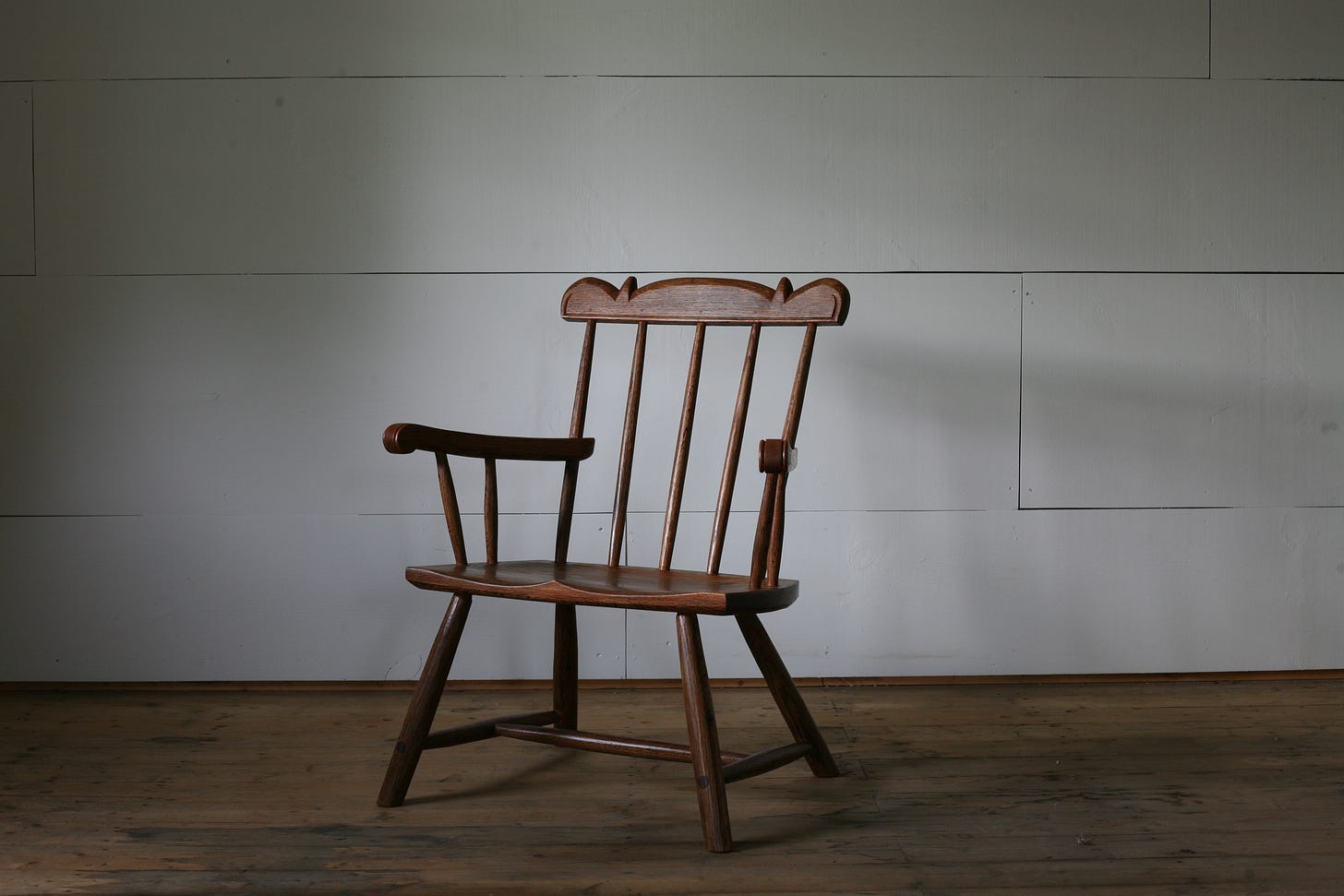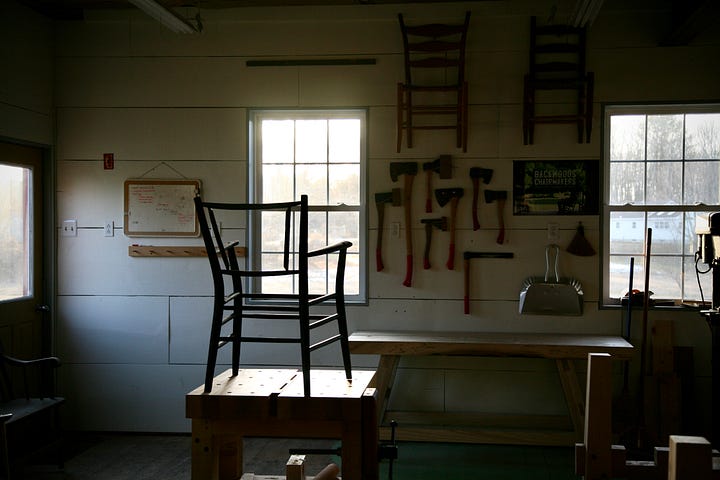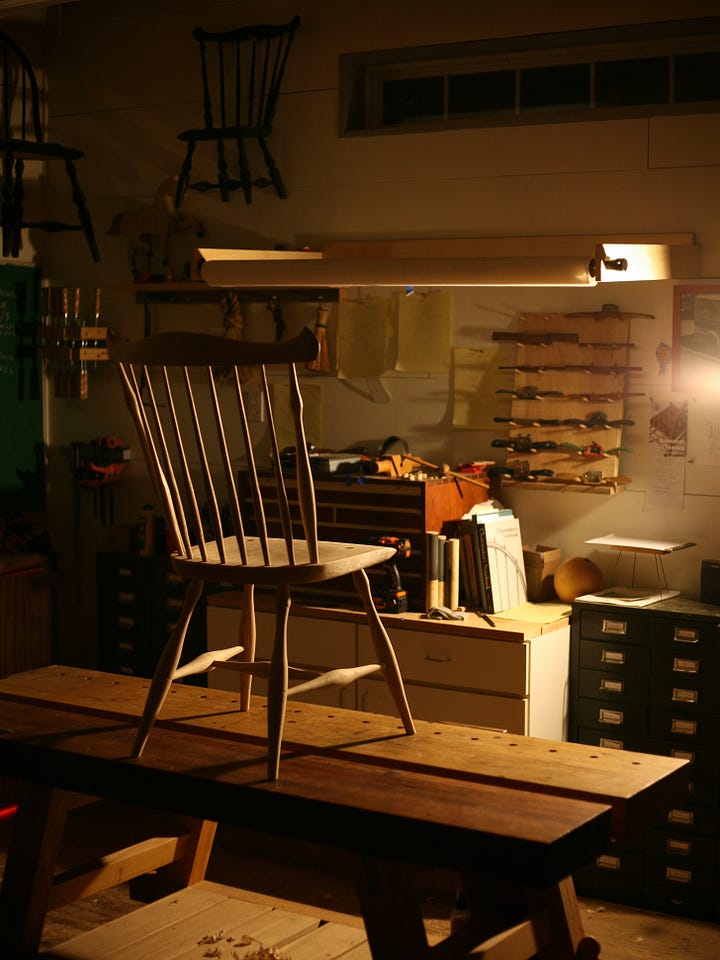Before Backwoods Chairmakers, I owned an early generation Canon Rebel that I used to take a few pictures of our family. I had no clue how to use it (it was years before I realized the “P” option was picture mode….where the camera made all the decisions for me). I took some bad pictures along with some good but I didn’t understand why. The project preparations forced my hand, in a good way, into better understanding photography.
I remember being on a visit with a chairmaker at the start of the book. I overshot….I think I took 500-1000 images that day to compensate for my lack of experience. Most were poor, with a few winners mixed in. Some of them made the book. I studied why they were poor (was it my composition or a technical issue?) and this gave a foundation to do things differently on the next shoot.
I won’t forget the words of that chairmaker. We were shooting and I asked him to adjust his pose.
He said, “I don’t know. You tell me what to do. You’re the photographer.”
The problem was that I wasn’t a photographer. I was overmatched. I got better quickly after that.
Chris Schwarz gave me a few pointers as I started out (use a tripod, F8 or above for crisp details, and stay at or below ISO 400). I used that information until I couldn’t. Shooting for Backwoods Chairmakers often included people and action. The settings didn’t always allow for tripods. And the shops were often too dimly lit for F8/ISO 400. I had to compromise to get the shots. (I realize I jumped right in with technical details….this is the worst of it, I promise).

Gear: currently, I either shoot with the Canon 3ti or a Canon 5D (given to me by photographer Justin Skeens/InCahoots). Both older model cameras, the 5D being nineteen years old. I shot most of Backwoods Chairmakers with the 5D and a couple lenses. My iphone often captures better images (in backlit settings, in low lighting without a tripod, etc) than either Canon. Plus the phone is always on me, where I don’t carry the larger camera setup to all places.
So why use a camera?
I like the look of the Canon images and the colors feel right to my eye. I minimally edit the images, so I’d like to get the picture correct from the camera.
The iphone images are ideal for a website or social media. But the camera produces a large file that can be edited and used in a larger format (prints, book images). Plus the camera catches more subtle or sensitive images than I’m capable of making with the phone.
The main reason……I enjoy using the Canon 5D over a phone. I like the shutter sound. I like the challenge.
Another thought on gear. It doesn’t matter all that much. Subject and composition are key. For furniture, that’s the piece and the setting around the piece.
I’ll eventually upgrade my camera (probably another Canon DSLR). Newer gear will improve my chances of getting good images in different environments but won’t ensure quality pictures. That’s up to me, the photographer. I’m not immune to the draw of better gear, or a newly released camera [last year’s Fujifilm x100V craze nearly took my money]. The desires for new kits usually pass. At this point I’m waiting to consider/purchase the next camera until I have the subject of my next book in mind.
Lighting: I use natural lighting whenever possible. When shooting furniture within my shop, that often means early morning or late evening, when the light is softer than midday. I avoid using my cheap set of studio lights as much as possible. Not because the studio lights do not work well, but because I like the soft nature light better.
I find side lighting to be more interesting than light from directly above, which is why I struggle to make a good image with my overhead shop lights. That means most night shooting within the shop is out. Matt Kenney does a great job with lighting when sharing his furniture.

Composition: This is where the fun starts. The furniture is the focus of the image, but does it need to be the only thing in the shot? Is there a semi-abstract way of shooting a detail that showcases the work in an interesting way? At what angle should I shoot this piece (low, above, etc.)?
My best advice here…..clear the clutter. Candid shots are great but they have to capture the feeling of the active shop. Within a candid shot, the messy shop may complement alongside the furniture piece or help to frame it. Either way, it needs to be considered alongside the furniture. If the furniture is meant to be the sole focus, it’s best to clean around it.
When shooting process/making shots at my bench, I’ll leave tools and shavings around and do minimal cleaning. I also have a roll of paper hanging above the bench for a clean background when taking the final, finished images of a piece.
There are angles within my shop that are ideal for shooting furniture, where the background is (relatively) clean and the lighting great. And other angles within the shop are chaotic…..this happens when shooting with the woodworking machinery as the background, or when the floor is prominently included (it’s a wonderful wooden floor, but years of oil stains leave a blotchy, distracting backdrop).
Surroundings matter. Before shooting, I look through my camera lens at the periphery of the image, not only the subject, looking at the edges of the frame. Is an extension cord visible in a lower corner? I’ll clear it. Is my old furnace tucked into the side of the frame? It’s an ugly thing and I’ll adjust my shot angle to avoid having it in the picture. Or the answer may be to put the furniture piece off-center to achieve a better picture (and get the furnace out of frame).
My process: shooting during the day means being aware of my environment. Within the shop, that means being attentive to good lighting moments and the times when my work is lit well. Overcast days are great for shooting.
If the lighting and piece are right, I turn my focus to everything but the furniture piece. Is there debris on the bench? Is the shop floor clear of shavings and does it need to be for this image? Is there a Diet Coke can in the background? (I’ll start leaving it in there as an endorsement….reach out to me Coca-Cola).
Then I’ll shoot the picture. I enjoy the process of photography along with the results. I’ll share some, often through instagram, though many are just for me.







Between you and Chris Schwarz, I've learned a lot about taking better pictures of my pieces. My shop is so small and crowded that it's difficult to get great pictures. There's so much clutter or it's the garage door in the background. I think I really need to set up a corner of a room in the house to take better shots.
Thank you for this post. Some great details and good perspective for my inner "do I keep using my phone or buy an old DSLR" dialogue.
The night shots look great -- almost 'haunted' :)